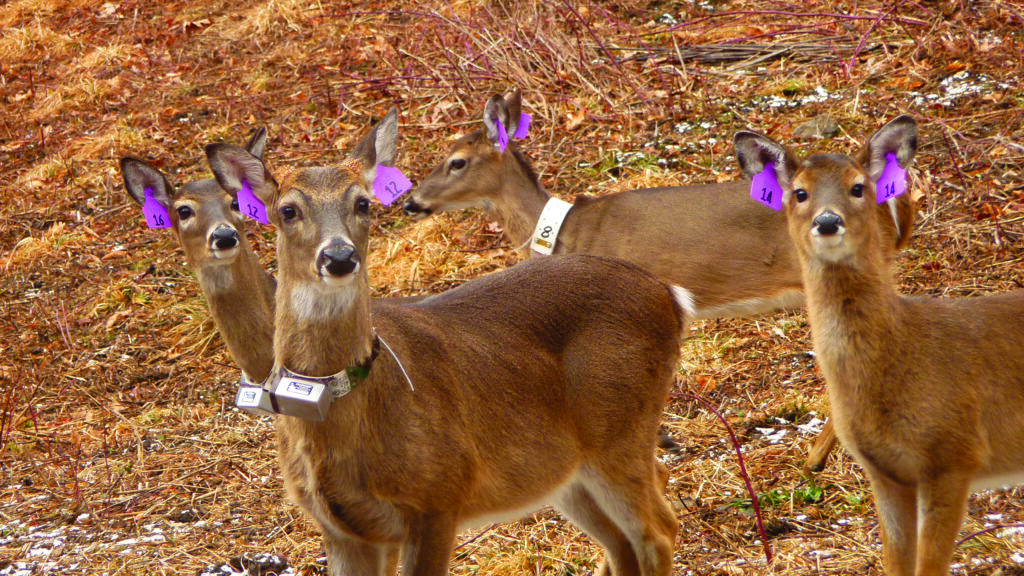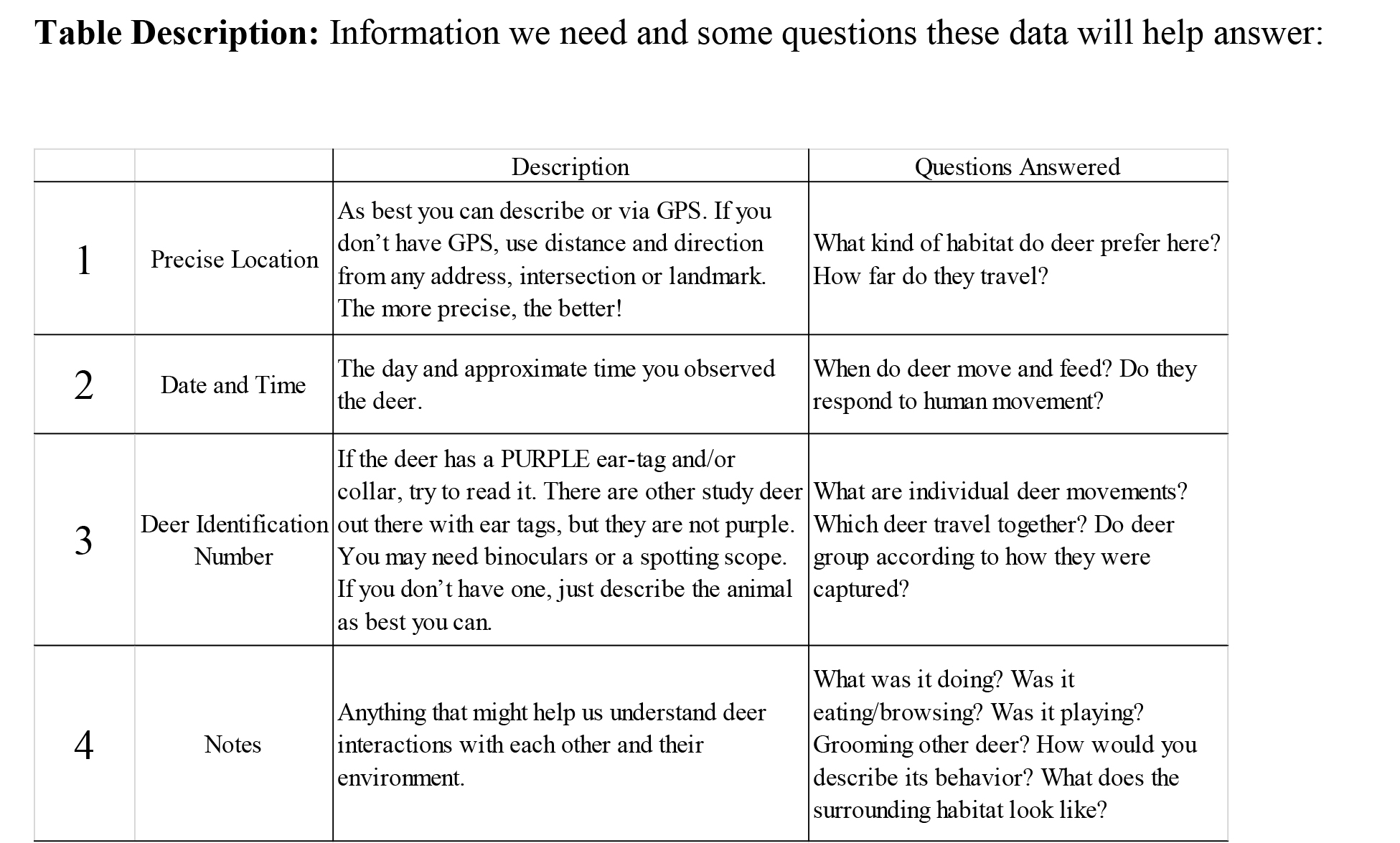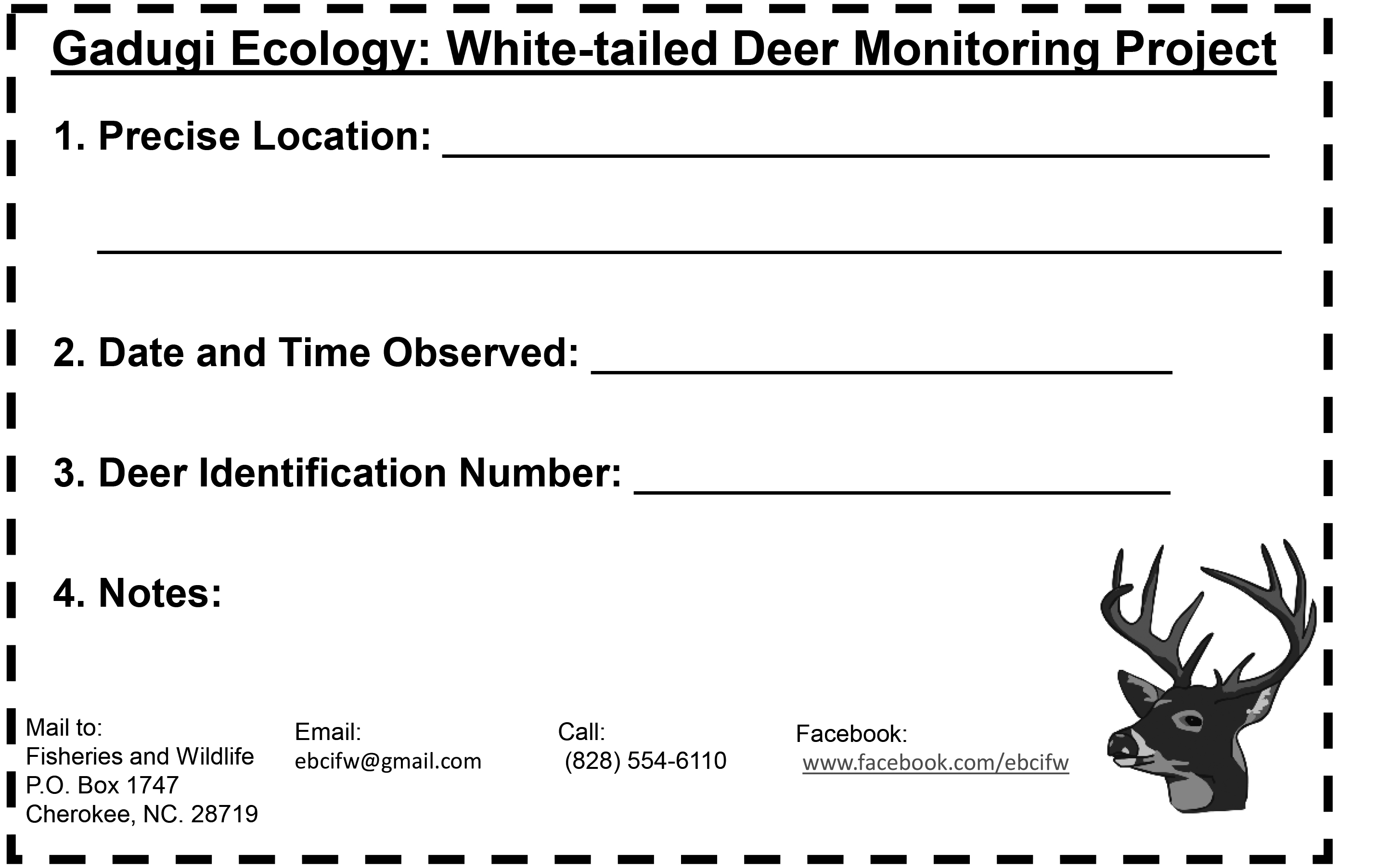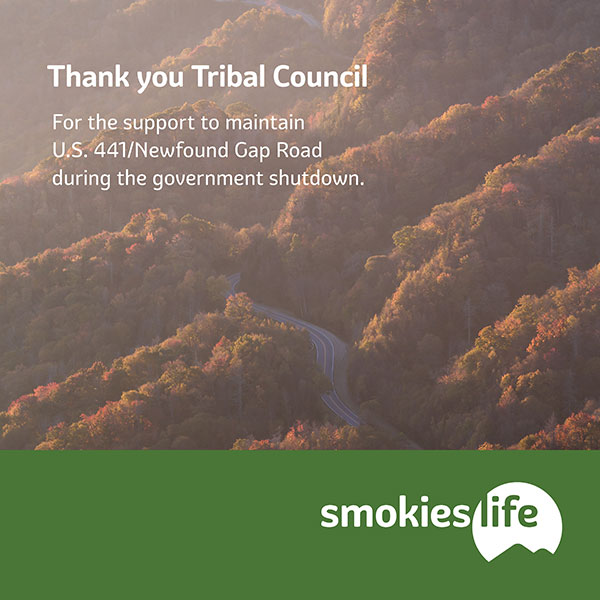
White-tailed deer waiting on their release into the Qualla Boundary on Jan. 27. Notice the purple ear tags and collars with numbers. Note that the fawns do not have collars but only ear tags. (Photo by C. Hickman, Eastern Band of Cherokee Indians)
By CALEB R. HICKMAN
EBCI FISHERIES & WILDLIFE
As a new biologist and resident to the area, my goal is to learn about both the animals and people. The people in the Qualla Boundary have a strong community bond and are some of the nicest I have encountered. Many folks have offered me help and advice, both personally and professionally. Citizens often inform me where I can find animals and provide local history of those animals. In this article, I would like to explain a way that people can protect their natural resources by using their strong sense of community involvement.
Gadugi Ecology
One of the most challenging efforts for natural resource managers is the daunting task of collecting information about the many plants and animals in an area. However, the growth of media sources like smart phones and social networking provides a new and convenient way of monitoring our environment. Recently, there has been a drive to use so-called “citizen science” to aid conservation efforts. For example, citizens all over the world use cell phones to call in rare species sightings and use the internet to catalog birds to help biologists understand migration patterns. This information is very useful in guiding management plans that best preserve valuable resources for the community.
With a group effort in mind, the small staff of the EBCI fisheries and wildlife program can benefit from the very social nature of our Cherokee citizens. Combined with the convenience of internet and social media, we can leverage our tight-knit community to obtain information to improve our natural resources. This kind of community effort is not new to Cherokee citizens. Traditionally, Cherokee people relied on their neighbors to complete important tasks like harvesting crops or building houses, which can still be seen today. These community efforts are termed “gadugi” in the Cherokee language. Therefore, we would like to promote what we call “GADUGI ECOLOGY.” This traditional perspective, coupled with modern technology, will provide a collaborative environment that will make us pioneers in combining community with conservation. Most importantly, the people will have an opportunity to re-establish a bond with their environment.
Gadugi Ecology to understand deer in the Qualla Boundary
We all know that white-tailed deer are important to Cherokee traditions and history, but just how important are deer to our local ecology? We know deer numbers are low throughout the Qualla boundary. Low numbers are especially perplexing given that white-tailed deer are considered over-populated in much of their range, even in well-hunted and very nutrient poor habitats. Therefore, researchers are interested in learning more about deer ecology in our area. To help us understand the limitations of deer, we have recently transported over 30 wild white-tailed deer from a North Carolina state park to the Qualla Boundary. You may have heard about these deer through other people, news sources or even seen them yourself. Although the number of released deer currently roaming on tribal lands is minimal (approximately one deer per 400 acres of tribal preserve), it is important to find and understand every individual. Currently, our small EBCI fisheries and wildlife staff are collaborating with state and federal biologists to locate and study these deer. With so much land and so few of us, we could use your help. We ask that citizens of the Qualla Boundary help us catalog the recently released deer. These deer should have purple ear tags (a lot like earrings), and many have collars. Each deer has an individual number that can be seen on ear tags and collars. You may need binoculars because a 50-foot buffer is required to help ensure our deer stay wild. We ask you to call, mail, email or post on our facebook page with information about sightings (see below). With a collection of information from several citizens, we can learn much about the deer, including how they form social groups, what habitats they prefer, and what distances they move. Therefore, we would appreciate your involvement in a Gadugi Ecology program to help us better understand our wildlife.
If you are interested in being a Gadugi Ecologist, here is how you can participate in the deer project:
Table Description: Information we need and some questions these data will help answer:
Data Sheet Description:
If you see one of the study deer, please fill this out and send us your information. You can mail it to us, email or even call us about the details. Your community will appreciate your participation.






